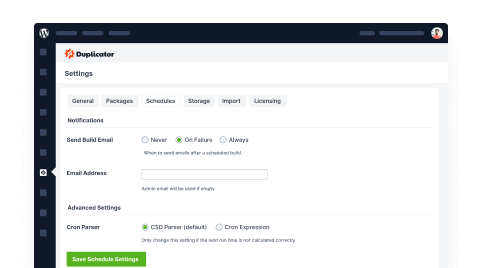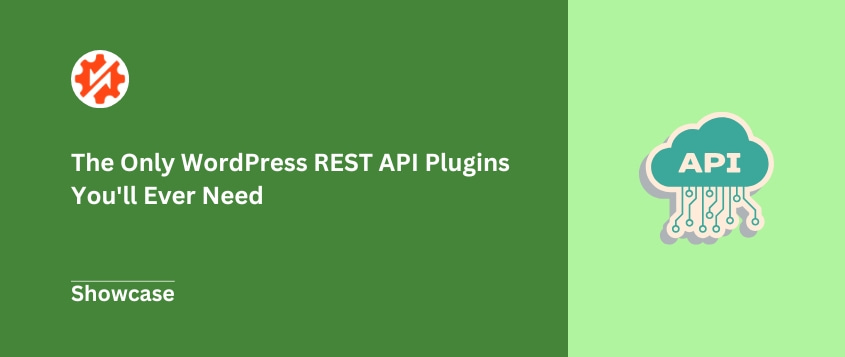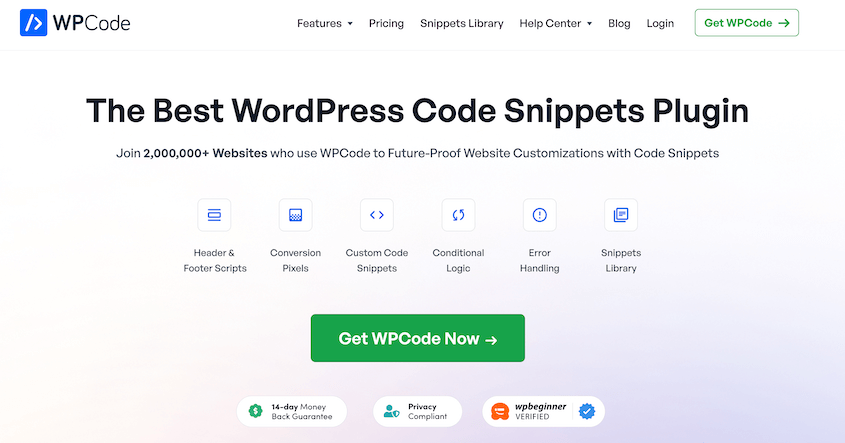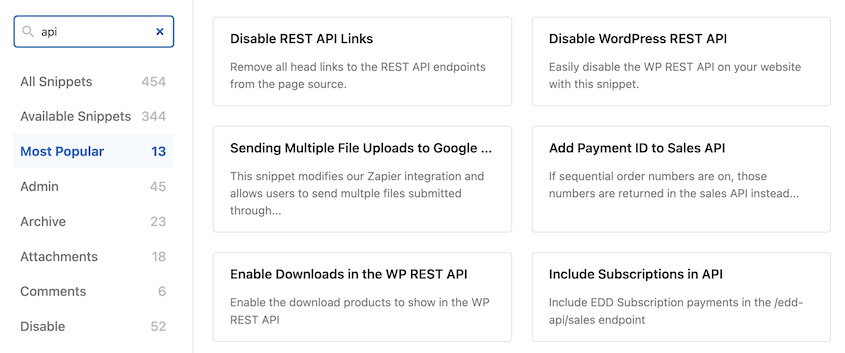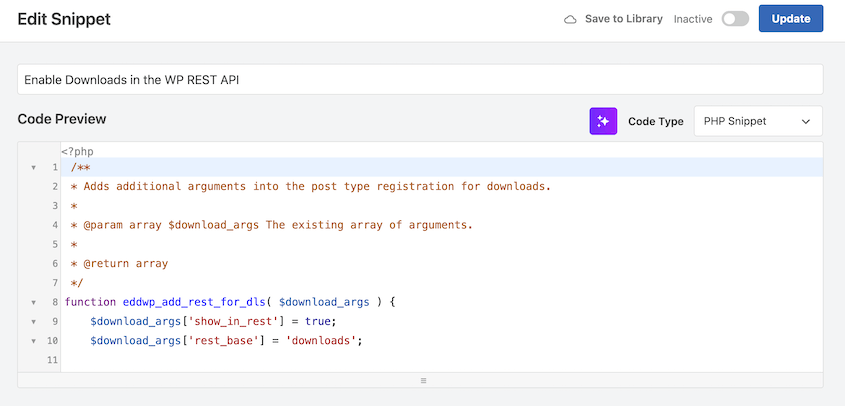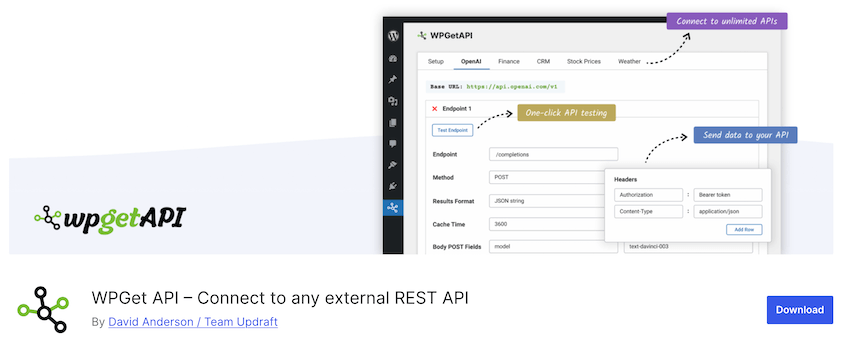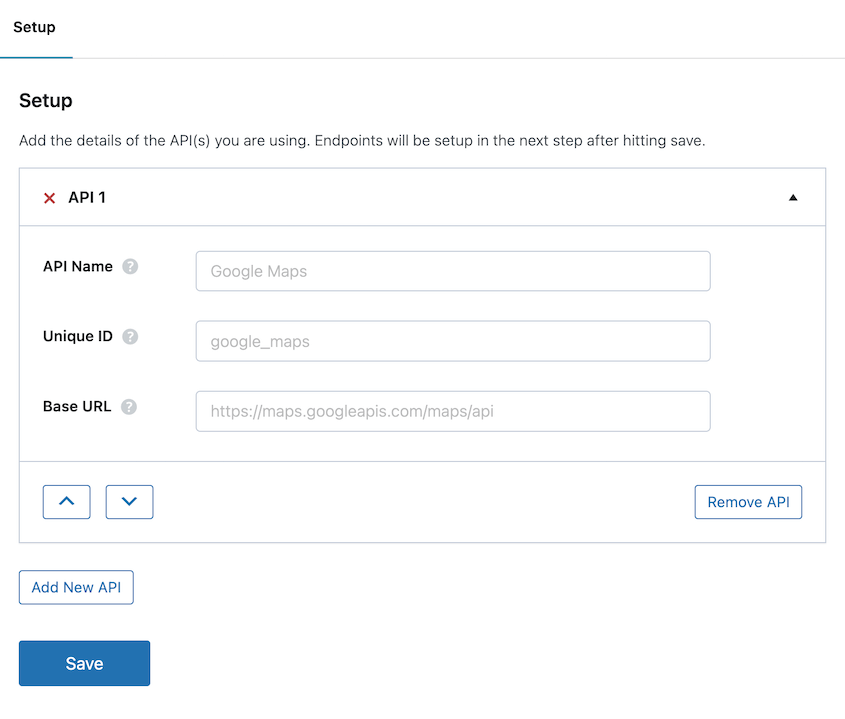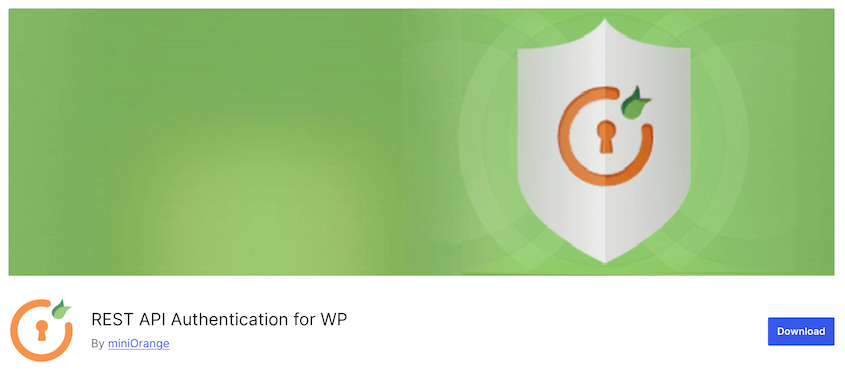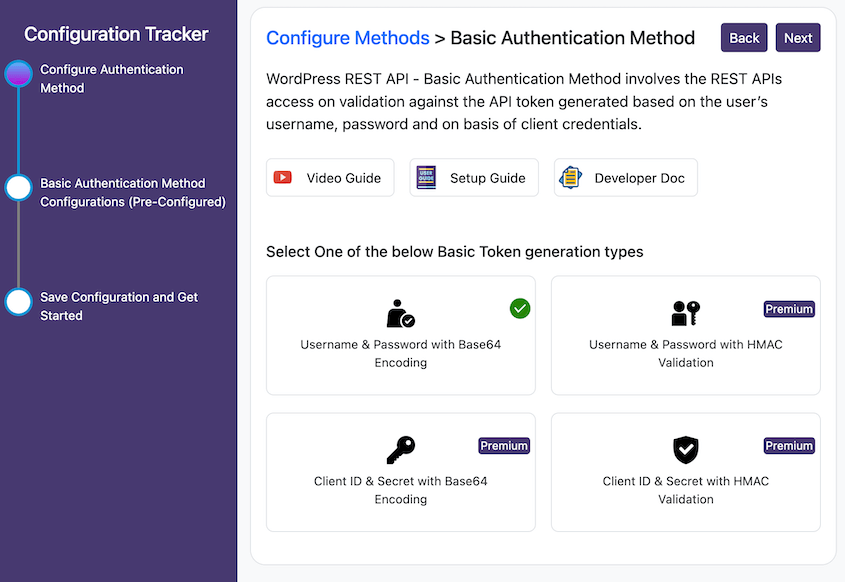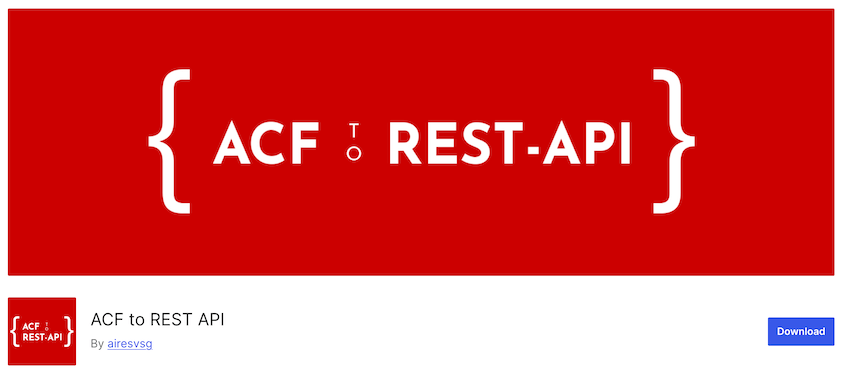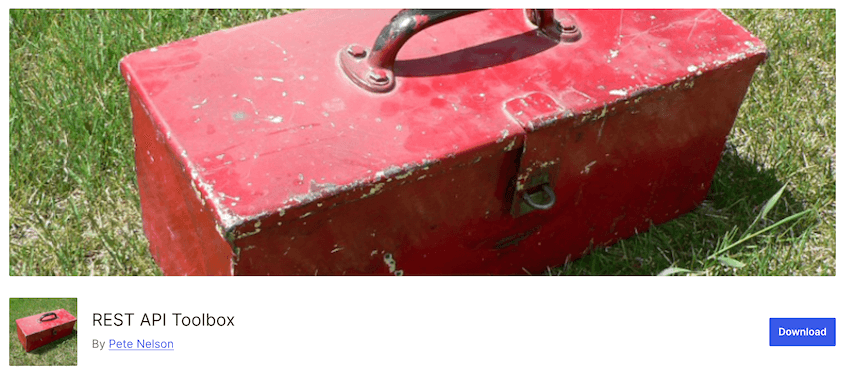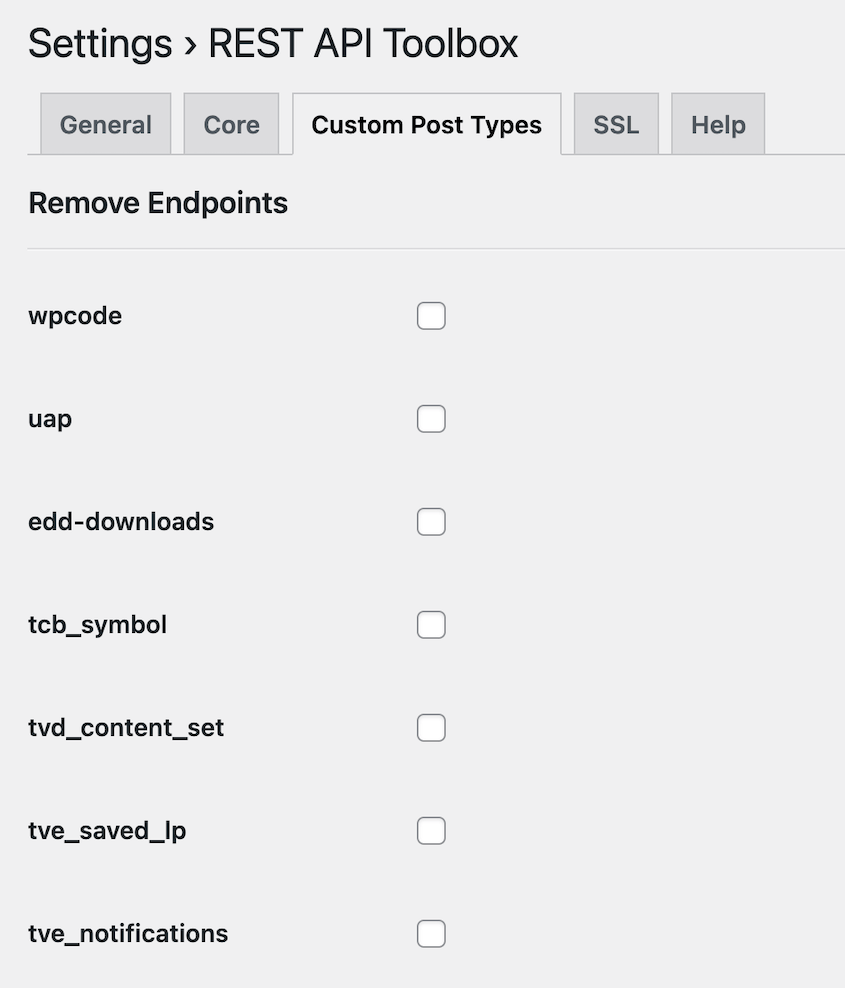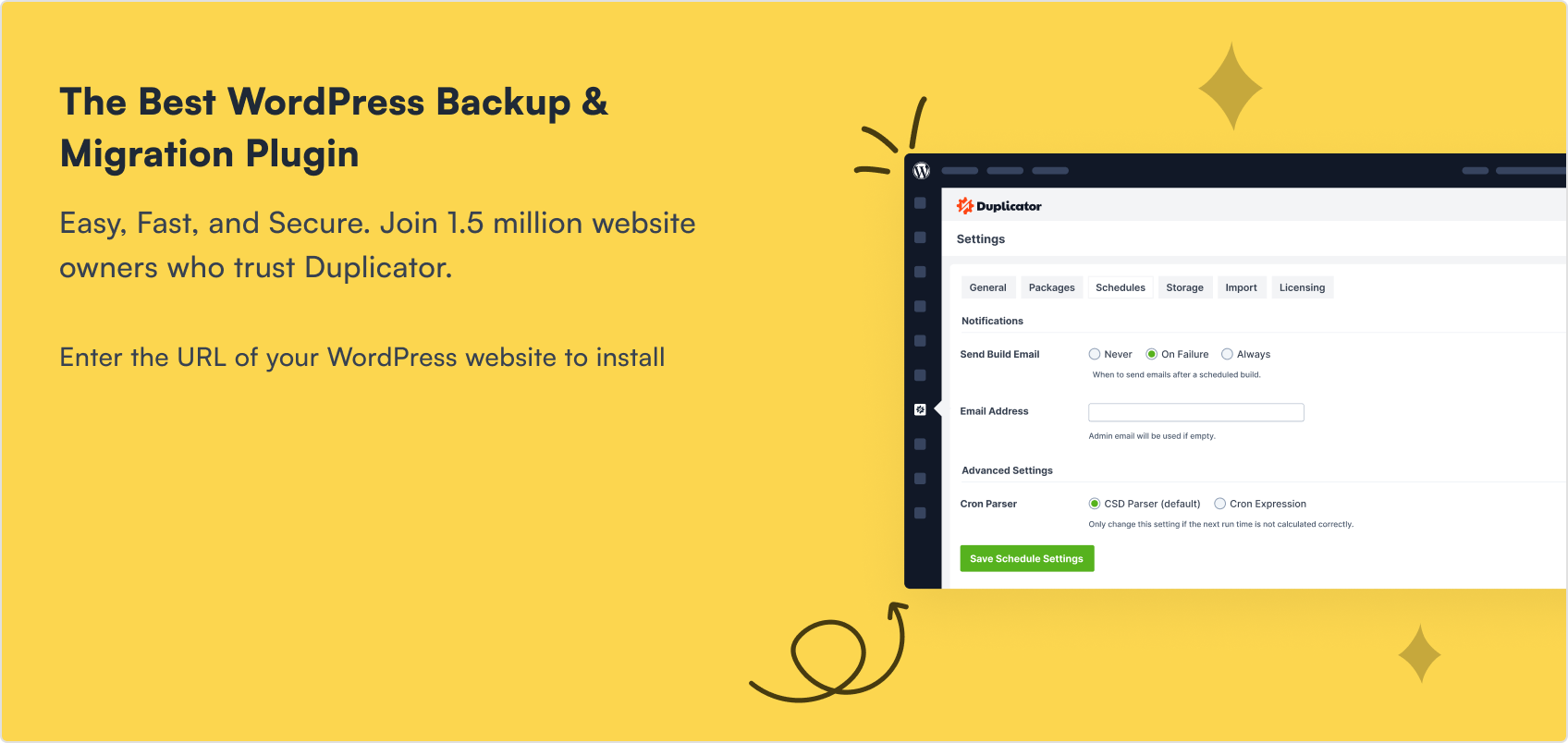WordPress stopped being just a blogging platform years ago. Today, it powers everything from e-commerce sites to mobile app backends, and the REST API is what makes this transformation possible.
Think of the REST API as WordPress’s universal translator. It takes all your site’s data and presents it in a format that other applications can understand and use.
Your mobile app needs to display your latest blog posts? The REST API handles that. Your JavaScript framework wants to create new pages dynamically? The API makes it happen.
However, managing, securing, and extending this feature isn’t always straightforward. The built-in API is powerful, but it rarely fits every project’s needs right out of the box.
That’s where the right WordPress REST API plugin comes in. Whether you need tighter security, custom endpoints, or better integration with external services, there’s a plugin that can help.
Let me walk you through the essential options that can transform how you work with WordPress’s API!
Table of Contents
What Is WordPress REST API?
The WordPress REST API is a standardized interface that lets external applications access your WordPress data. It’s essentially a universal translator that speaks JSON — the common language of modern web development.
When an application wants to interact with your WordPress site, it doesn’t need to understand PHP or MySQL. Instead, it sends a simple HTTP request to the API, and WordPress responds with clean, structured JSON data that any programming language can parse.
REST stands for Representational State Transfer. It’s just a set of rules for building predictable web services.
These rules ensure that when you ask for a list of posts, you get posts. When you ask for user data, you get user data. No surprises, no inconsistencies.
How WordPress REST API Works
The API operates through endpoints, which are specific URLs that correspond to different types of data.
Want to fetch your latest blog posts? Hit /wp-json/wp/v2/posts. Need user information? Try /wp-json/wp/v2/users.
The magic happens in the request-response cycle. An external application sends an HTTP request (like GET, POST, PUT, or DELETE) to one of these endpoints. WordPress processes the request, queries its database, and sends back the relevant data as JSON.
This simple cycle is the foundation of headless WordPress architectures, mobile app integrations, and countless other modern web applications. It’s what allows a React frontend to display WordPress content, or a mobile app to publish new posts directly to your site.
Why Use WordPress REST API Plugins?
WordPress’s built-in API is powerful, but it’s not always configured perfectly for every use case.
Sometimes it’s too open, exposing data you’d rather keep private. Other times it’s not open enough, leaving out custom fields or post types you need to access.
The default API also assumes you’re okay with its authentication methods and security settings. For many projects, especially those involving sensitive data or external integrations, these defaults fall short.
This is where REST API plugins become essential. They let you customize the API’s behavior without diving into complex PHP development.
You can enhance security, connect to external APIs, expose custom fields, troubleshoot caching issues, or even disable the API entirely if you don’t need it.
The right plugin can save you hours of development time and help you avoid common mistakes that could compromise your site’s security or performance.
Our Favorite WordPress REST API Plugins
Before we dive into specific tools, back up your site first. One misconfigured endpoint, one problematic authentication setup, and suddenly your entire site could become inaccessible.
The stakes are real when you’re modifying how your site’s core systems work. That’s why Duplicator Pro should be your first install before any REST API work.
Duplicator creates complete snapshots of your site so you can restore your site in minutes if an experiment goes wrong. This is essential insurance for anyone pushing WordPress beyond its defaults.
With that safety net in place, let’s look at the plugins that will transform how you work with the REST API.
Adding custom REST API functionality often requires PHP code snippets. The traditional approach — editing your theme’s functions.php file directly — is risky and messy.
WPCode provides a much better solution. It gives you a safe, organized way to add and manage custom PHP snippets for API work.
Need to create a custom endpoint? Want to modify how existing endpoints behave? WPCode lets you add these snippets with proper error handling and easy management.
The plugin includes features like snippet validation, conditional loading, and the ability to easily disable problematic code. If you’re building custom API functionality, WPCode transforms a potentially dangerous process into something manageable and secure.
While most REST API plugins focus on exposing WordPress data to external applications, WPGet API works in the opposite direction — it pulls data from external APIs into your WordPress site.
This plugin is perfect for displaying dynamic content like weather forecasts, stock prices, or product data from external inventory systems. Instead of building complex integration code, you can connect to external APIs and display their data using simple shortcodes.
WPGet API handles the connection, caching, and error handling behind the scenes. You focus on displaying the data where you need it, without worrying about the technical details of API communication.
The default WordPress REST API authentication works fine for basic use cases, but it’s not ideal for application-to-application communication. If you’re building a mobile app or connecting external services to your WordPress site, you need more thorough authentication.
REST API Authentication by miniOrange adds several secure authentication methods, including API Keys and OAuth 1.0a. These methods are specifically designed for automated systems and provide much better security than cookie-based authentication.
Proper authentication is crucial for any serious API integration. It ensures that only authorized applications can access or modify your site’s data.
This is especially important for headless WordPress projects or any scenario where external systems need write access to your content.
One of the most frustrating problems in API development is dealing with cached data. You update content, but the API keeps returning the old version. You modify an endpoint, but changes don’t appear for hours.
WP REST Cache addresses this common developer headache by adding a simple cache-clearing button to your admin bar. Instead of hunting through various cache plugin settings or waiting for cache expiration, you can instantly clear your REST API cache.
This plugin is a time-saver during development and testing. When you’re quickly working on API functionality, having instant cache control keeps your workflow smooth and your frustration levels low.
Advanced Custom Fields (ACF) is one of the most popular WordPress plugins, but there’s a catch: ACF data doesn’t appear in REST API responses by default. If you’re building a headless site or mobile app that needs access to custom fields, this creates a significant problem.
ACF to REST API solves this by automatically exposing all your custom fields in the appropriate API endpoints. Install the plugin, and your ACF data immediately becomes available to external applications.
This plugin is useful for headless WordPress projects. Without it, you’d need to write custom code to expose ACF data, which is both time-consuming and error-prone. With it, your custom fields work exactly as you’d expect them to in API responses.
WordPress core provides very few settings for controlling the REST API’s behavior. REST API Toolbox fills this gap by giving you a central control panel for the API’s core settings.
The plugin lets you disable the API for non-logged-in users, change the default wp-json prefix, control which post types are exposed, and manage various other API behaviors. These controls can help you customize the API to match your specific security and functionality requirements.
Instead of writing custom code to modify API behavior, you can use REST API Toolbox’s intuitive interface to make these changes safely and reversibly.
Sometimes the best approach to API security is the simplest one: turn it off entirely. For simple websites that don’t need external integrations, the REST API can represent an unnecessary security risk.
Disable WP REST API does exactly what its name suggests — it shuts down public access to API endpoints for anonymous users. Logged-in users can still access the API (which is necessary for the WordPress admin interface), but external applications cannot.
This plugin is perfect for websites that don’t need API functionality. It’s a clean, simple security measure that eliminates potential attacks without affecting your site’s normal operation.
Frequently Asked Questions (FAQs)
How do I add REST API in WordPress?
You don’t need to add it. REST API has been a core WordPress feature since version 4.7. It’s automatically available on every WordPress site unless specifically disabled.
How do I check if REST API is enabled?
Visit yourwebsite.com/wp-json/ in your browser. If you see JSON data listing available endpoints, your REST API is working correctly. If you see an error message or nothing at all, something is blocking access.
How do I enable REST API in WordPress?
REST API is enabled by default in WordPress. If it’s not working, check your security plugin settings. Many security plugins disable or restrict API access as a security measure. You might also have custom code that’s disabling the API.
Why is my REST API not working in WordPress?
The most common causes are:
- Custom code in your theme or plugins is disabling the API
- Your permalink structure is set to “Plain” (change it to any other option)
- A security plugin is blocking API access
- A plugin or theme conflict is interfering with API functionality
Build Boldly, But Back Up First
WordPress REST API transforms your site from a simple content management system into a powerful application platform. With the right plugins, you can secure it, extend it, and integrate it with virtually any external system.
The plugins I’ve covered give you the control you need to make the API work exactly how you want. Whether you’re building a headless site, connecting to external services, or simply need better security controls, there’s a plugin that can help.
But remember, REST API also introduces new risks. Before you start experimenting with custom endpoints or external integrations, make sure you have a reliable backup solution in place.
Duplicator Pro is your insurance policy against the unexpected. When you’re pushing the boundaries of what WordPress can do, having the ability to restore your site is essential. Try it out today!
While you’re here, I think you’ll like these hand-picked WordPress resources:
Joella is a writer with years of experience in WordPress. At Duplicator, she specializes in site maintenance — from basic backups to large-scale migrations. Her ultimate goal is to make sure your WordPress website is safe and ready for growth.

